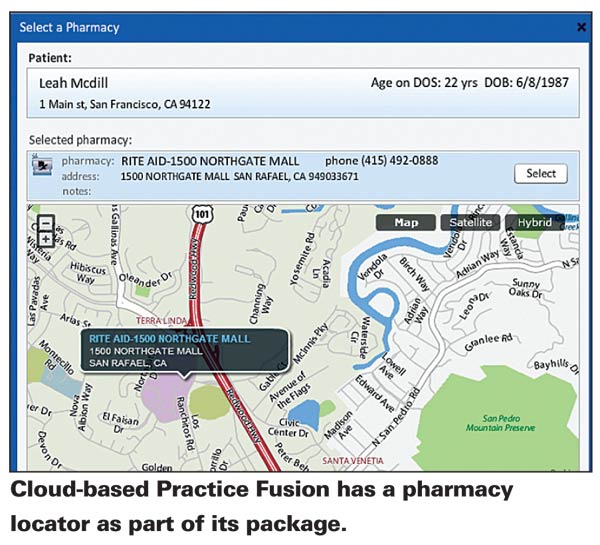It's hard to believe something with a name as ephemeral as cloud computing could help streamline your practice and make it more cost-competitive, but that's just what the makers of cloud computing networks claim. Here's a look at the cloud computing concept, its potential pros and cons, and how it might be of use to ophthalmologists.
What Is Cloud Computing?
Cloud computing involves using applications and data storage that are based on an array of servers at a distant location or locations and are accessed by your Internet connection, rather than residing on your own hardware.
A couple of the main advantages of such a setup, touted by cloud computing companies, lie in the fact that the programs you use, which in this case would be electronic medical records, scheduling and possibly billing, aren't on your machines. This means you don't have to pay for all the software licenses, which can get very expensive if you've got to equip multiple practice locations. Nor do you have to go through the expense and headaches of upgrading your software every six months to a year. The updating is done on the cloud computers and is transparent to you, the final user.
"We use a very robust EMR software suite from NextGen in our practice," comments Richard Prince, MD, of Tri-County Eye Physicians and Surgeons in

The Cloud Settles on Ophthalmology
Though cloud computing has been around in consumer computing, it's still relatively new in health care. However, in June, two companies announced news about their cloud computing systems for use in small to mid-sized practices.
• Practice Fusion. This Web-based practice management/EMR system, which offers charting, billing and e-prescribing, has attracted attention because it's free. The catch is the physician is shown advertisements as he uses the applications. A version without ads is $100 per physician per month.
Houston
However, doctors wonder if they can trust someone else with all of their patients' data.
"This is something we discuss constantly at our practice," says Dr. Sepulveda. "Some of our associates feel we don't have power over the security of our data. They ask, 'What if Practice Fusion gets a virus or something happens on their end?' If we lose our data, we're finished. But, the same thing goes for data that we might store here. If something happened to it here, we'd be in trouble, too. However, Practice Fusion continuously backs up the data and uses encryption to protect it."
Practice Fusion doesn't currently allow physicians to draw images, however. "I want to draw corneal findings, but it doesn't offer that option," says Dr. Sepulveda. "We have to precisely describe our findings in the exam note."
For information, visit practicefusion.com or call (415) 346-7700.
• GE's Centricity Advance. General Electric recently unveiled this cloud-based system. Though no ophthalmologists use it yet, Corey Miller, GE's media relations manager, says GE is working to accommodate ophthalmology.
Centricity Advance has functions for creating exam notes, e-prescribing, coding tools and electronic claims submission. It also allows appointment scheduling.
The system works on the "thin client" model, in which the bulk of the applications and data are on GE's cloud servers, with just a small program running on the practice's machines. "The thin client is kind of like a Web browser on steroids," says Mike Nolte, vice president and general manager of health-care information technology at GE. "The thin client uses a little of the horsepower to do more work on the client side, so it's passing less information back and forth with the cloud, which means better performance."
Mr. Nolte acknowledges that security concerns are key for many practices. "We'll encounter physicians with a predisposition to have their data on-site at their practices, who don't want it in the cloud," he says. "If that's the case, we might use servers and deploy the system as a traditional client/server application."
In terms of cost to the practice, Centricity Advance uses billing models based on how much of the system a practice wants to use. For information, call 1 (888) 439-6584, ext. 6476, or visit gehealthcare.com/centricityadvance.
Looking at cloud computing, Dr. Prince muses that it might be useful for the solo practitioner. "We have 10 providers and therefore have the luxury of a full-time director of IT," he says. "But, for solo practitioners, cloud computing may be able to serve their needs economically."




